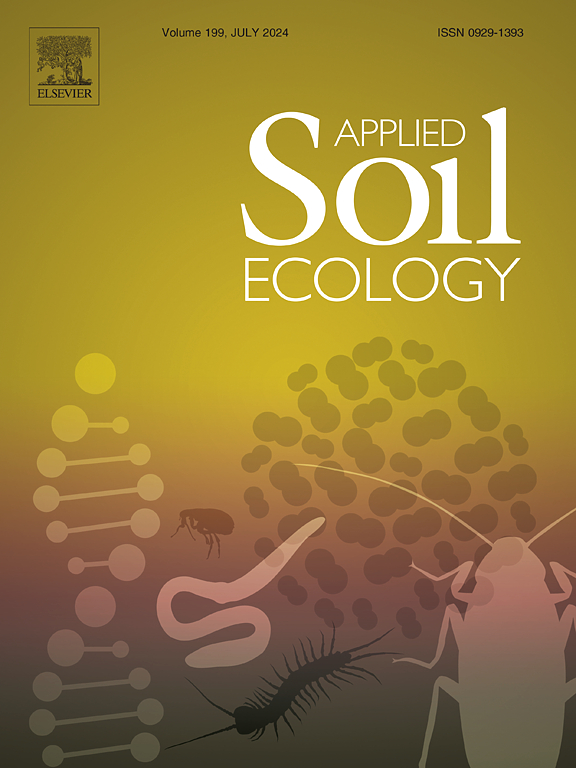Effects of long-term conservation tillage on soil aggregate carbon fractions and microbial characteristics under rice-oilseed rape rotation systems
IF 4.8
2区 农林科学
Q1 SOIL SCIENCE
引用次数: 0
Abstract
Previous research on the impact of long-term conservation tillage on soil organic carbon (SOC) has primarily concentrated on bulk soil. However, there is a scarcity of studies that assess the effects of long-term conservation tillage on SOC and organic carbon (C) fractions within different aggregates. Consequently, a 9-year field experiment was conducted to investigate the changes in SOC fractions and microbial community, as well as their interrelationships within different aggregates under different tillage practices and residue management in a rice-oilseed rape rotation system. There were four treatments, including double crops with no-tillage (NT) and residue mulch (ORNS), double crops with NT and no residue (ORN), single crop with conventional tillage (CT) and no residue (ONRC), and double crops with CT and no residue (ORC). Long-term conservation tillage significantly increased the proportion of >250 μm aggregates while simultaneously reducing the proportion of <250 μm aggregates. Compared with ORC, both ORNS and ORN increased the proportion of >250 μm aggregates by 19.0 %–35.6 % and 14.0 %–28.0 %, respectively, while decreasing the proportion of <250 μm aggregates by 23.8 %–45.7 % and 17.1 %–32.2 %. Moreover, long-term conservation tillage had a significant impact on SOC fractions content, soil enzyme activities and total phospholipid fatty acid (PLFA) of both >250 μm and < 250 μm aggregates. In both >250 μm and < 250 μm aggregates, compared with ORC, ORNS and ORN resulted in higher the SOC fractions content (dissolved organic C, microbial biomass C, light fraction organic C, and particular organic C) by 6.2 %–113.5 % and 4.2 %–71.2 %, the enzyme activities (cellobiohydrolase, β-glucosidase, xylosidase and polyphenol oxidase) by 10.2 %–74.5 % and 9.0 %–77.3 %, the PLFA by 14.6 %–37.2 % and 9.0 %–28.5 %, respectively. Partial Least Squares Path Modeling further indicated that long-term conservation tillage mainly affected the SOC by meditating microbial community in >250 μm aggregates, and by changing microbial community and organic C fractions in <250 μm aggregates. Overall, long-term conservation tillage serves as an effective management strategy for the accumulation of SOC in rice-oilseed rape rotation systems. This approach holds significant importance for mitigating climate change and ensuring food security.

求助全文
约1分钟内获得全文
求助全文
来源期刊

Applied Soil Ecology
农林科学-土壤科学
CiteScore
9.70
自引率
4.20%
发文量
363
审稿时长
5.3 months
期刊介绍:
Applied Soil Ecology addresses the role of soil organisms and their interactions in relation to: sustainability and productivity, nutrient cycling and other soil processes, the maintenance of soil functions, the impact of human activities on soil ecosystems and bio(techno)logical control of soil-inhabiting pests, diseases and weeds.
 求助内容:
求助内容: 应助结果提醒方式:
应助结果提醒方式:


